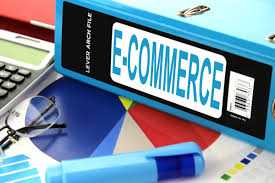Last Updated on March 24, 2024 by Nasir Hanif
What connection exists between Marketing Automation and e-commerce , i.e. the online sale of products and services? Is it possible to create a strategy by integrating these two digital tools?
The answer is yes, of course with the support of experienced and knowledgeable marketers. To adequately understand how Marketing Automation and e-commerce can operate in synergy ensuring a better sales flow , it is first of all necessary to remember that we can define Marketing Automation as a series of personalized emails directed to specific users, subscribed to certain lists and who respect a precise set of requirements . These One2One communications are intended to increase the value of the so-called user experience , i.e. the experience that the user experiences in his relationship with the brand.
The Marketing Automation systems begin to operate after the completion of a specific online action by the user: subscribing to the newsletter, filling out a form on a landing page, requesting more information and so on.
The different warm-up phases typical of Marketing Automation software have specific objectives, aimed, in the final step, at the selling process : they build virtuous and lasting relationships between brands, leads and new / acquired customers; guarantee the uniqueness and accuracy of the message sent to users; significantly increase the opening rate of Email Marketing campaigns .
In the field of e-commerce, each of these objectives is fundamental not only to finalize the first sale, which can also be an impulse or linked to a specific moment or need on the part of the user, but to build engagement . constant and a relationship of trust with the company, and therefore encourage regular purchases .
How does a Marketing Automation flow for e-commerce work?
Brands that use e-commerce as a digital sales tool (exclusive or ancillary) of their products will find, in the near future, more and more useful to use advanced Marketing Automation software . This is because the flow of automated and calibrated communications on user lists will make it possible to avoid manual intervention, allocating the time thus gained to other marketing or post-sale actions (such as customer care ), which are clearly just as important.
In general terms, a good marketing automation strategy for e-commerce will have to include the following action segments:
- Once the user has been conveyed to their website or landing page, and once they have obtained their data and authorization for their processing by filling in a form, the Marketing Automation software will send a welcome email .
- Subsequently, and according to pre-established times and methods based on the lead’s behavior, the user will be targeted with a series of quality communications , which focus on really interesting topics and topics, and which will allow them to get to know the brand and its mission better. , its values and its offer.
- After the transmission of these fundamental notions, communicated in engaging mode and according to calibrated timelines, Marketing Automation provides for the sending of emails centered on offers and products of real interest to the user. In this sense, we will speak of content-related offers, i.e. linked to the contents previously communicated in order to be coherent or, alternatively, based on more generic but equally interesting offers.
- Once the user has made the purchase, the Marketing Automation will allow to keep the new customer “warm” with respect to subsequent offers based on products related to the one of his interest, and never random. Not only that: email marketing can (and should) also include valuable content (such as free downloadable ebooks, premium content, dedicated discounts) to increase brand loyalty.
A good Marketing Automation software, integrated within a broad-spectrum digital strategy, will act as a ” thermometer ” of the relationship with the customer or lead. Through processes such as A / B testing or the analysis of fundamental values such as the click-through rate, it will be possible to evaluate the strengths of one’s communications in terms of content, design, tone of voice and redemption, recalibrating the strategy “in stroke ”, without standardizing it but, on the contrary, customizing it on the behavior of the various user lists or even on the user.In the field of e-commerce, each of these objectives is fundamental not only to finalize the first sale, which can also be an impulse or linked to a specific moment or need on the part of the user, but to build engagement . constant and a relationship of trust with the company, and therefore encourage regular purchases .
How does a Marketing Automation flow for e-commerce work?
Brands that use e-commerce as a digital sales tool (exclusive or ancillary) of their products will find, in the near future, more and more useful to use advanced Marketing Automation software . This is because the flow of automated and calibrated communications on user lists will make it possible to avoid manual intervention, allocating the time thus gained to other marketing or post-sale actions (such as customer care ), which are clearly just as important.
In general terms, a good marketing automation strategy for e-commerce will have to include the following action segments:
- Once the user has been conveyed to their website or landing page, and once they have obtained their data and authorization for their processing by filling in a form, the Marketing Automation software will send a welcome email .
- Subsequently, and according to pre-established times and methods based on the lead’s behavior, the user will be targeted with a series of quality communications , which focus on really interesting topics and topics, and which will allow them to get to know the brand and its mission better. , its values and its offer.
- After the transmission of these fundamental notions, communicated in engaging mode and according to calibrated timelines, Marketing Automation provides for the sending of emails centered on offers and products of real interest to the user. In this sense, we will speak of content-related offers, i.e. linked to the contents previously communicated in order to be coherent or, alternatively, based on more generic but equally interesting offers.
- Once the user has made the purchase, the Marketing Automation will allow to keep the new customer “warm” with respect to subsequent offers based on products related to the one of his interest, and never random. Not only that: email marketing can (and should) also include valuable content (such as free downloadable ebooks, premium content, dedicated discounts) to increase brand loyalty.
A good Marketing Automation software, integrated within a broad-spectrum digital strategy, will act as a ” thermometer ” of the relationship with the customer or lead. Through processes such as A / B testing or the analysis of fundamental values such as the click-through rate, it will be possible to evaluate the strengths of one’s communications in terms of content, design, tone of voice and redemption, recalibrating the strategy “in stroke ”, without standardizing it but, on the contrary, customizing it on the behavior of the various user lists or even on the user.

